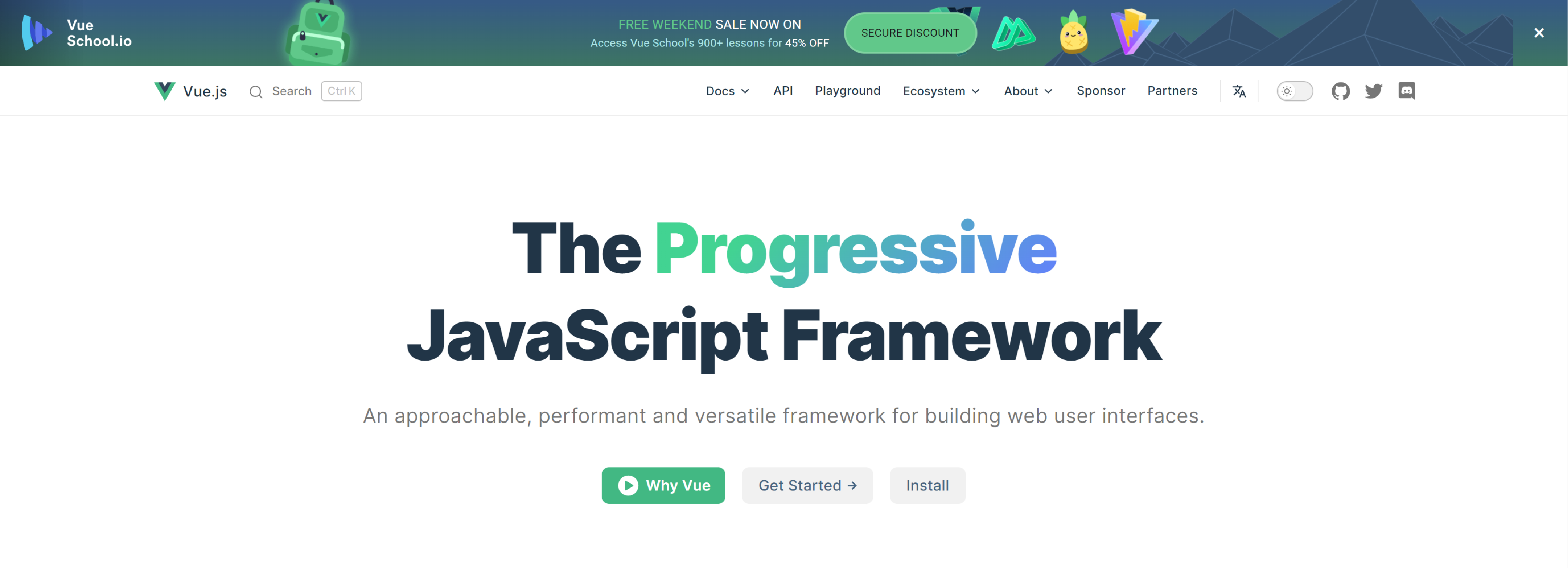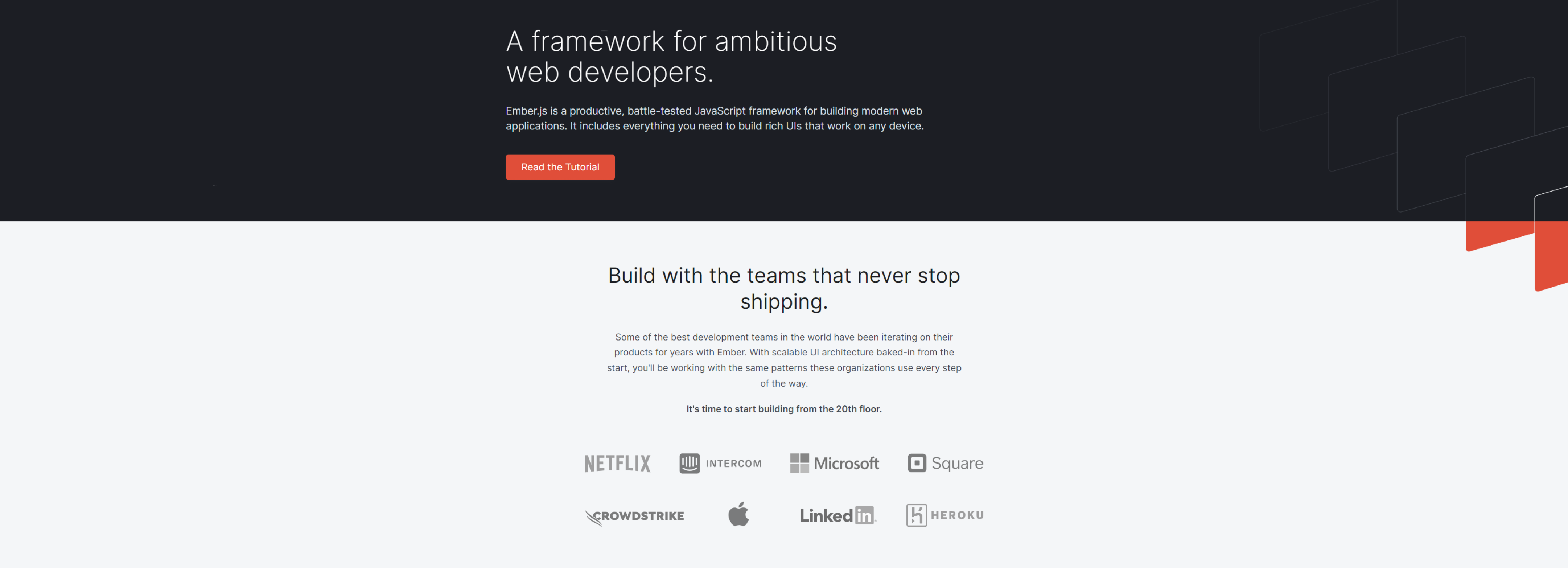Web development means both the front & back-end development part of the web app. Front-end is the front-end side of the website, which is visible to customers/clients. The fonts, colors, designs, and everything through which a user interacts with the website is the front end. Whereas the back end is the side which is invisible to the users, it is also called the server side. It makes certain that everything on the front end runs smoothly. And is backed by code, databases, servers, APIs & more.

Front-end & back-end are two essential aspects of web development. But web development company regard the front-end part as of greater importance because if the front-end is good, beautifully designed & created, then only the web developers would be able to create a solid back-end.
The trick to creating a solid front end is to choose a powerful front-end development stack that backs your app from start to end! Taking inputs from expert front-end web developers Ireland, we have compiled a list of the best front-end tools & frameworks that you can utilise to build a brilliant website from the front & back.
CLLAX is a business tech startup headquartered in the USA, with a robust global presence.
With over nine years of experience in the startup and business world, and extensive involvement in connecting with thousands of companies and startups, the CLLAX team has compiled key insights in this overview.
10 best frameworks to create a solid front-end
This list is a combination of the top 10 front-end development tools. It has been based on inputs from expert web developers in Ireland.
1. Node.js

The number one framework – is Node.js. It is that framework which overtook React.js to become the top framework used by the front-end developers. (Statista reports) Node.js is both for front-end & back-end and is an open-source, cross-platform framework.
Pros
- Node.js has a lightweight run time, which means with Node.js you can have fast deliveries, and a shorter time to market.
- Needs less coding as it is both a client-side & server-side framework. Remember, we told you it’s both for front-end & back-end?! Yes.
- It’s a cross-platform framework that can be deployed on many platforms.
- Enables faster development with Google Chrome’s V8 engine, and engine which is known for its efficiency & security.
Cons
- Node.js doesn’t have library support, unlike many frameworks.
- The API of Node.js is unstable; new changes are inconsistent with previous versions.
- Lack of talented Node.js web developers in the developer community.
2. React

React, or React.js, is a well-known front-end framework. Backed by Meta, React is also one of the most-preferred frameworks among front-end web developers in Ireland. With React, web development is effortless – it helps build web applications real quick, all with writing less code.
Pros
- You can reuse your components & build an interactive application.
- React.js is super SEO friendly, thus, higher chances of your site ranking.
- Preferred front-end framework among developers, super-easy to learn and use.
- Used by Facebook, Airbnb, Uber Eats and many other companies.
Cons
- React.js’s frequent updates lead to poor documentation.
- Extremely rapid framework, developers sometimes find it hard to catch up.
- Sometimes, using React is not just enough, web development company have to make use of another development tool for complete web application development.
3. jQuery

One of the oldest front-end frameworks in town, jQuery, was created by John Resig. It is one of the most feature-rich frameworks and is second on the list of the top frameworks for front-end development. (Top web development framework list powered by Statista) jQuery has a big library and makes client-side scripting easier for developers.
Pros
- iQuery is open-source & gives you the flexibility of customizing your web application according to your requirements.
- There are no licensing issues as it is free to use.
- The syntax of jQuery is clean and simple, enabling web experts to write efficient codes.
- jQuery has its own animate method; therefore, web developers don’t have to make use of additional resources.
Cons
- jQuery has multiple versions; some work, and some don’t.
- Developers need to have some understanding of CSS.
- Debugging is hard with jQuery because of its complex libraries and plugins.
4. Angular JS

The modern web development framework – AngularJS is one of a kind front-end framework. With AngularJS, web experts can create single-page web applications with total ease & efficiency. That’s not it; AngularJS even allows scaling your single-page web application into an enterprise-level web application effortlessly. Its set of tools completely enables developers to build, test and make changes.
Pros
- Best for creating Single-Page web applications. (SPA)
- Angular JS is open-source & permits high-level of customisation.
- Angular JS is a Google-supported framework with high-end functionalities.
- Easy to learn, and beginners don’t need much knowledge to learn Angular JS.
Cons
- AngularJS is less secure compared to other front-end frameworks in the industry.
- It is a Java-Script-based framework, then if the website visitor disables JavaScript, only a plain page will be visible.
- It has limited SEO options and search crawlers might have poor accessibility to the website.
5. Vue.js

Vue.js, a Model-View-View-Model (MVVM), is a super lightweight framework mainly used to create single-page web applications. Evan You, created Vue.js, and now it is one of the best modern-day front-end frameworks. Its elements are flexible and very easy to adapt. Vue.js makes it easy to scale up from small to more significant, extensive projects.
Pros
- Vue.js has a valuable set of tools, and it makes it easy for developers to adapt to future markup language changes as well.
- Vue.js can also be integrated with other web development Ireland frameworks.
- Vue.js is a very lightweight framework, just 20 KB in size; incredible, right?
Cons
- Vue.js has some mobile-related incompatibilities and might not work with older versions of mobiles.
- Expert Vue.js developers are not readily available in the industry; clients may have a hard time finding Vue.js talents.
- Vue.js lacks scalability, it is suitable for individual projects, but when it comes to larger-scale projects, Vue.js might not be a perfect fit.
6. Backbone.js

A rich, well-structured web application, Backbone.js, is the perfect backbone a website needs. Based on the Model-View-Controller (MVC) design paradigm, Backbone.js is one step ahead in connecting APIs with the RESTful JSON interface. Moreover, with Backbone.js, Single web applications can be created.
Pros
- It only uses two JS – jQuery & Underscore.js and makes it lightweight for developers.
- Backbone.js has 100+ extensions available.
- If the developers leverage the Backbone-led convention, it enables a codeless system.
- It has tons of small libraries, enabling structuring the web application in a better format.
Cons
- Backbone.js is little in use by developers.
- It doesn’t have two-way data binding.
- As Backbone.js is not that popular, it doesn’t have a big community like other front-end frameworks.
7. Ember.js

A productive, battle-tested framework, Ember.js is used to create modern single-page web applications. It has a rich UI with the best practices integrated into it. Moreover, it’s a growing platform and can develop applications for both mobile & desktop.
Pros
- It allows two-way data binding.
- It has a brilliant community of developers.
- Ember.js backs both JS & TS – TypeScript.
- It is known for its stability, high-performing & accessibility.
Cons
- It’s hard to learn for developers who are starting out.
- Ember.js lacks the component of reuse.
- Moreover, Ember.js’s learning curve is steep.
8. Svelte

A framework that is oriented to build high-performing User Interfaces. (UI) Though still at the beginning level, Svelte is 10x faster than other frameworks which are available. In fact, web developers Ireland suggests that Svelte is specifically designed to create high-performing UIs with a JS-based Virtual Machine. Svelte is free & open-source and is a new approach to enhance the entire web development process.
Pros
- Helps developers focus more on creating solutions rather than writing code.
- Web applications created with Svelte are highly-reliable and swift in performance.
- It allows direct changing of variables & components.
- According to Insight Stacks Overflow, Svelte is the most loved framework among developers.
Cons
- Only a few developer tool kits are available for Svelte.
- The Svelte developer community is also not that big enough.
- IDE support is missing in Svelte.
9. Preact

Preact is said to be the tiny version of React. Just 3KB in size, it was created as an alternative to React and had the same features of a modern-day framework as React. Specially made to create the smallest of small web applications, Preact’s fastest virtual DOM makes it possible.
Pros
- Small in size, enabling faster application development.
- Makes integration of complex elements even in a small web application.
- Developers can use all the React components & build an efficient system.
Cons
- Unlike React, Preact has a small developer community.
- Preact doesn’t support the React prototype.
- In Preact, content support is not there.
10. Knockout.js

A front-end framework with templates, Knockout.js is based on the MVVM design paradigm. It aids developers in creating single-page web applications that are rich & highly responsive in nature. It is regarded as more of a library than a framework.
Pros
- Knockout.js enables developers to create explicit, error-free rich websites.
- It permits simple implementation.
- The Knockout.js library is small & lightweight.
- Even authorizes capturing HTML markup, which can be further leveraged as a template.
Cons
- Templates on external files are hard to use with Knockout.js.
- Not that popular in the developer community, clients may face a hard time finding Knockout.js developers.
Now that we have discussed the top 10 frameworks, and their pros & cons, it’s time to list the top 10 front-end tools, which you can utilize along with the above-stated one of the best frameworks & create a dashing website.
10 best front-end tools
- Chrome dev tools
- Visual studio code
- HTML5 boilerplate
- AngularJS
- CodePen
- Sublime Text
- GitHub
- Google fonts
- Bootstrap
- Grunt
To wrap up
So, these were the insights into tools & frameworks used for web development Ireland. We get that one set of tools & frameworks out of a hundred others can be tricky. And here is where our list can help you get started.
Look into your requirements carefully, and then go into selecting the perfect framework & tools. To select wisely, take the help of your partnered web development company in Ireland; they will help you find the best fit for your web application requirements.
We wish you all the best.